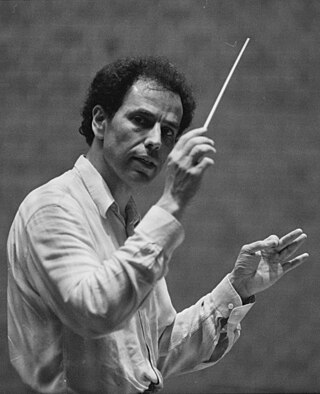
André Ernest Modeste Grétry was a composer from the Prince-Bishopric of Liège, who worked from 1767 onwards in France and took French nationality. He is most famous for his opéras comiques.

François-Joseph Gossec was a French composer of operas, string quartets, symphonies, and choral works.

Maria Luigi Carlo Zenobio Salvatore Cherubini was an Italian Classical and Romantic composer. His most significant compositions are operas and sacred music. Beethoven regarded Cherubini as the greatest living composer of his era. Cherubini's operas were heavily praised and interpreted by Rossini.
Opéra comique is a genre of French opera that contains spoken dialogue and arias. It emerged from the popular opéras comiques en vaudevilles of the Fair Theatres of St Germain and St Laurent, which combined existing popular tunes with spoken sections. Associated with the Paris theatre of the same name, opéra comique is not necessarily comical or shallow in nature; Carmen, perhaps the most famous opéra comique, is a tragedy.

Isabelle de Charrière, known as Belle van Zuylen in the Netherlands, née Isabella Agneta Elisabeth van Tuyll van Serooskerken, and [Madame] Isabelle de Charrière elsewhere, was a Dutch and Swiss writer of the Enlightenment who lived the latter half of her life in Colombier, Neuchâtel. She is now best known for her letters and novels, although she also wrote pamphlets, music and plays. She took a keen interest in the society and politics of her age, and her work around the time of the French Revolution is regarded as being of particular interest.
Opéra féerie is a French genre of opera or opéra-ballet where the plot is based on fairy tales, often with elements of magic in their stories. Popular in the 18th century, from the time of Jean-Philippe Rameau onwards, the form reached its culmination with works such as La belle au bois dormant by Michele Carafa and Cendrillon by Nicolas Isouard at the beginning of the 19th century.

Zémire et Azor is an opéra comique, described as a comédie-ballet mêlée de chants et de danses, in four acts by the Belgian composer André Grétry. The French text was by Jean-François Marmontel based on La Belle et la bête by Jeanne-Marie Leprince de Beaumont, and Amour pour amour by Pierre-Claude Nivelle de La Chaussée. The opera includes the famous coloratura display piece La Fauvette in which the soprano imitates birdsong.
The French term comédie mêlée d'ariettes was frequently used during the late ancien régime for certain types of opéra comique.

Ignaz or Ignace Vitzthumb was an Austrian musician, composer and conductor active in the Austrian Netherlands. He was also music director of the La Monnaie theatre in Brussels.

Jean Elleviou was a French operatic tenor, one of the most celebrated French singers of his time.

Carel Anton Fodor or Carolus Antonius Fodor was a Dutch pianist, conductor, and the most prominent composer of his generation in the Netherlands, writing in the manner of Joseph Haydn.
Servaes de Koninck, or Servaes de Konink, Servaas de Koninck or Servaas de Konink, or Servaes de Coninck was a Flemish baroque composer of motets, Dutch songs, chamber and incidental music, French airs and Italian cantatas. After training and starting his career in Flanders he moved to Amsterdam in the Dutch Republic, where he was active in circles connected to the Amsterdam Theatre.
Bartholomeus or Bartholomaeus or Barthelomaeus is a masculine Latin given name, the Latin equivalent of Bartholomew. The German cognate is Bartholomäus. Notable people with the name include:

Eduard Philip Spanjaard, known professionally as Ed Spanjaard, is a Dutch conductor and pianist.
Johann August Just was a German keyboard player, violinist and composer.

Benoît-Joseph Marsollier (also known as Benoît-Joseph Marsollier des Vivetières, was a French playwright and librettist. He is particularly noted for his work in opéra comique. In 1780 he also led the first exploration of the Grotte des Demoiselles.
Zemire en Azor is a 1784 semi-opera, a musical play "with spectacles and a ballet" by Bartholomeus Ruloffs. It is one of the most successful attempts to create a Dutch-language opera in the 18th century. Zemire en Azor was, for its time, a box-office success, with thirteen performances. Ruloffs composed new music to a Dutch libretto, which had been translated from French, based on Marmontel's La Belle et la bête.
Opera in Dutch is a minor tradition in the opera history of the Netherlands. Since the earliest operas were staged in the Netherlands in the 17th century, the preference has always been for original Italian, French and German versions, or occasionally French translations of Italian and German works.

Clairval, real name Jean-Baptiste Guignard, was an 18th-century French operatic singer (tenor), comedian and librettist. He played with the same authority drama, comedy and opera, in a considerable number of roles. Among the most notable were:

Charles-Louis-Joseph Hanssens, known under the name Hanssens the elder, was a Belgian violinist, composer, conductor and theatre director.











